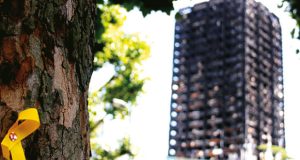 Nick Hawke, Business Director of in-building wireless communications solution providers Pan RF, discusses the importance of in-building cellular connectivity
Nick Hawke, Business Director of in-building wireless communications solution providers Pan RF, discusses the importance of in-building cellular connectivity
It’s a common misconception that poor mobile coverage inside buildings, arenas, shopping centres etc., is the fault and, therefore, responsibility of the four major network operators (MNOs). How often do we blame our provider when we have a call with intermittent signal, or worst still, the call keeps dropping out? When using our phones, and this happens, we don’t moan to the building owner or the boss; we blame O2 or Vodafone.
But the lack of in-building mobile signal is not always down to your network provider but is more likely due to poor wireless infrastructure in the building that you’re in. Without the correct foundations in place, you won’t get any signal.
Coverage can be affected by multiple factors, from Low-E glass windows and modern building materials to thick walls in older buildings. Plus, the location of the building can have an impact; for example, the position of the local cell sites and high population density in urban areas will affect the capacity and coverage available on your network inside the building.
MOBILE OVER LANDLINE
A Pan RF poll declared that 78 per cent of office workers use mobile phones at their desks, in meeting and communal areas, instead of a landline. Therefore, landlords and employers need to meet their expectations.
We are increasingly seeing office workers and tenants becoming more discerning about intelligent technology; they bring their own devices (BYOD) to the workplace and are working and conducting meetings in ways that need consistent coverage. Tenants want the infrastructure to work; they don’t want to put up with sketchy coverage, dropped calls, slow email downloads, or frozen video meetings.
Pan RF are seeing builders and architects planning for in-building mobile coverage at design and during the build phase. But for existing properties, buyers and FMs need to conduct a site survey of the four major networks before purchasing or taking over a building to ensure the least disruption to tenants.
Essentially, there are two system types, Passive or Active. The difference between them is a function of how the RF signal is distributed around the building. Don’t get wrapped up in the terminology; the essential elements are the different signal distribution methods and when to deploy one.
PASSIVE DAS
A Passive DAS system has no active components, meaning the RF signal is distributed from the signal source (Base Station or repeater) around the building with devices that require no external power, just combinations of coaxial cable, splitters, couplers and antennas. Essentially it is plumbing for mobile phone signals.
ACTIVE DAS
An Active DAS, in general terms, describes any DAS with active elements that need power; this could be at the coverage or network units.
Regardless of the type, all Active DAS will have a Master Unit that accepts signals from the MNOs. The Master unit converts the Radio Frequencies to light and distributes the signal over Fibre or another structured cabling around the property to their network units. Essentially this is like a computer network for mobile signals.
While there have been incredible technological advancements and a huge shift in the working environment, in-building cellular mobile connectivity has lagged far behind. For FMs and building owners, ensuring robust cellular coverage is no longer a luxury, it is a necessity.





